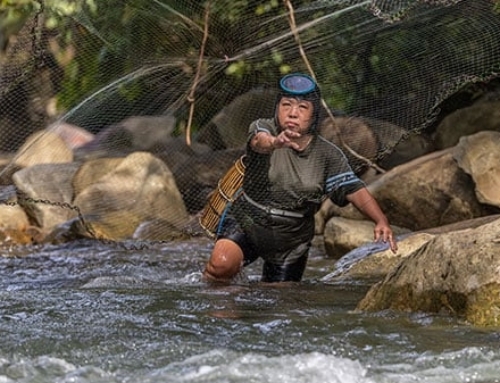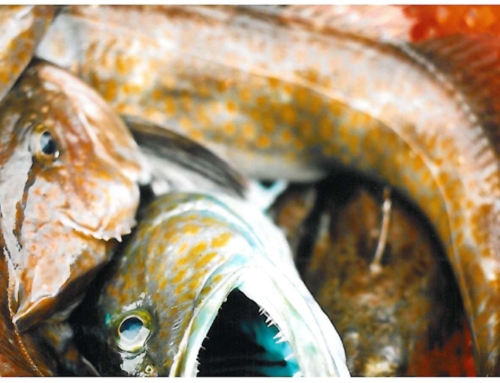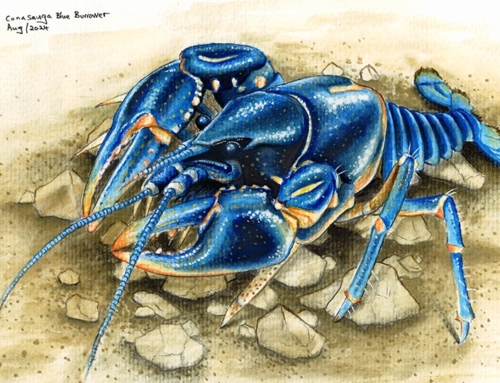Freshwater habitats are not just rivers, and conserving freshwater species can be done hand-in-hand with local fisheries, says Merlin Veron, Research Analyst at Synchronicity Earth and its Freshwater partner Shoal.
As you carefully step across the forest floor, it erupts with life, thousands of insects crashing between the dry leaves on this magic carpet of life. In the background the slow-running river pervades a sense of calm yet in a few weeks’ time, as the rains begin to fall, its mood will change. As the river gathers pace and begins to swell, it spills over into this low-lying forest and transforms it into a rich aquatic habitat, a nursery for many of the Mekong’s fishes.
The community who live adjacent to this forest in North-Eastern Thailand know the importance of this natural cycle: across the Mekong-basin, inland fisheries continue to support the subsistence and livelihoods of approximately 60 million people. They are one of the most productive natural systems on Earth.
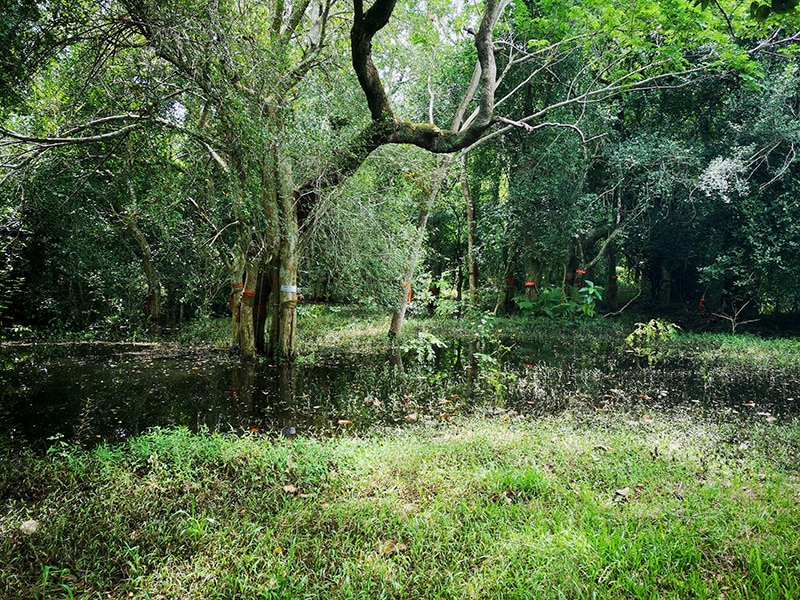
The flooded forests of the Mekong Basin provide an important habitat for fish to spawn, with the vegetation providing shelter for young fish.
Fishing communities for freshwater
To protect these fisheries, the habitats of the fishes need to be protected. The people best placed and most committed to conserving these habitats are the people who not only live alongside the river but who also rely on the fishery. In marine conservation, local management of coastal fisheries can act as a powerful mechanism for raising peoples’ wellbeing and income while conserving natural habitats and healthy populations. But what if a similar approach could be used in freshwater conservation? Living River Association (LRA), a partner in our Freshwater programme, has pioneered this approach for freshwater ecosystems with communities in North-Eastern Thailand. Their work with local communities in wetlands and along rivers in the Mekong Basin demonstrates just what can be done to conserve and restore freshwater habitats.
The work LRA does with local people is mainly focused around two models of community-led conservation: Community Wetlands Forests and Fish Conservation Zones. Community Wetland Forests are typically areas of forest along the banks of the river which are flooded during the monsoon season. These forests are located near to villages, providing a diverse array of resources as well as playing important ecological functions, such as acting as fish nurseries during the wet season. They are also home to several threatened species such as the elusive Fishing cat. Fish Conservation Zones are areas where the community agrees either not to fish at all, or only to fish on a specific day of the year. The idea of the zone is that it acts as a nursery for this section of the river, allowing fish to breed and for populations to grow with spill over benefits for areas outside the zone where fishing activity is still permitted.
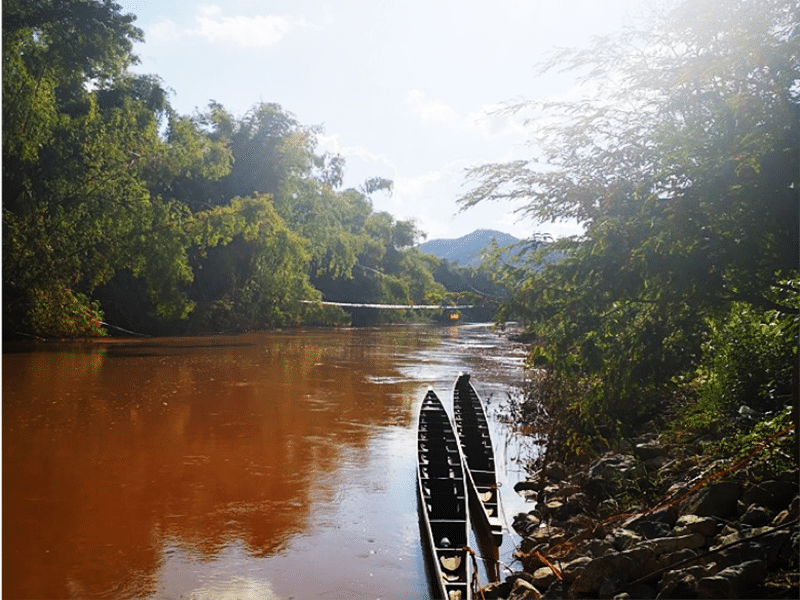
Fish Conservation Zones are areas where the community agrees either not to fish at all, or only to fish on a specific day of the year.
Life returns to the river
LRA recently conducted a survey into the impact of a Fish Conservation Zone established by a local community in North-eastern Thailand. Villagers reported that over a 5-year period (2013-2018) they had seen an increase in the populations of 17 fish and other aquatic animal species including threatened species such as the Asiatic softshell turtle. 9 species not previously recorded in the area were also found, including large Critically Endangered fish species such as the Siamese giant carp. All fishermen in the village reported increased income and fish catch following the establishment of the zone and its area has subsequently been expanded from an initial 500m stretch of river to 1 kilometre in 2018. After seeing the success of this village’s Fish Conservation Zone, the two neighbouring villages also adopted conservation zones.
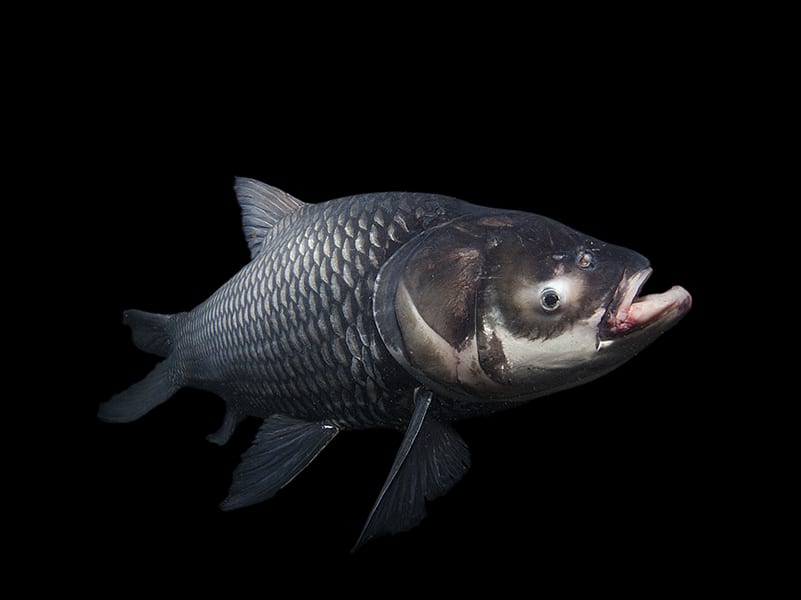
The Siamese giant carp is one of the largest freshwater fish species in the world, but due to myriad threats, few live to maturity and the species is classified as Critically Endangered on the IUCN Red List. Image: Zeb Hogan
Rethinking freshwater
Living River Association and the communities they work with show what is possible when we place a focus on conserving these incredible environments. Currently however, we continue to see that freshwater conservation, and the work of organisations like Living River Association, receives little funding or attention. While we spend lots of dollars and hours manipulating these freshwater systems to meet specific needs, we spend a comparatively tiny amount conserving their natural states – which provide so much to so many.
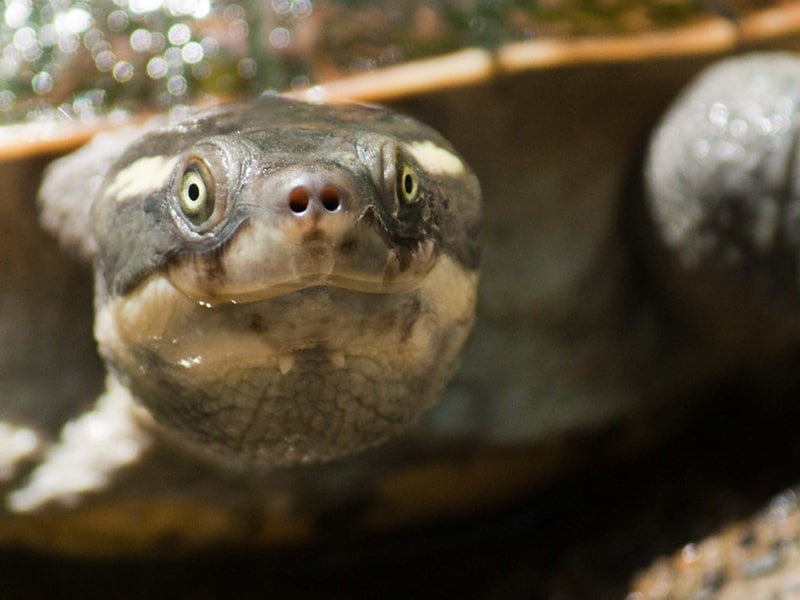
Freshwater ecosystems are not just important for fish species- they foster complex food webs from microorganisms and invertebrates to mammals, birds, amphibians and reptiles (such as the endangered Mary River turtle). Image: Daniela Parra
Perhaps one reason for this is our tendency to focus on freshwater as a physical resource rather than a natural environment. As Thomas Lovejoy (“the Godfather of Biodiversity”) accurately surmises:
“Freshwater is widely understood and managed more as a physical resource vital to survival rather than as the special and delicate habitat that it provides for an extraordinary array of organisms.”
Yet as freshwater carves its way towards the ocean and collects in natural basins it creates a mosaic of unique and spectacular habitats. These environments cover less than 1% of Earth’s surface but are home to more than 140,000 species including nearly one third of all vertebrates. They are a hotspot for life, akin to the rainforest canopies or coral reefs. Crucially, many of the services which we rely on freshwater environments for are functions of these healthy and diverse natural ecosystems, e.g. abundant inland fisheries, water purification, crop irrigation, carbon sequestration, the list goes on.
To truly conserve these ecosystems, we must shift our perception of freshwater environments – to see freshwater not as a just a physical resource but as a natural and biodiverse environment. In a way, just how when we think of forests, we think of the variety of life which they support and all the benefits we obtain from these places, we need to see wetlands, lakes, rivers and streams in the same way. We need to “forest-asize” freshwater. Perhaps even next time you think about freshwater you can think of that flooded forest bristling with life on the bank of the Mekong River – and challenge yourself to think about freshwater environments in a different way.
Learn more about the work our partners are doing for freshwater ecosystems by visiting our Freshwater Programme.

